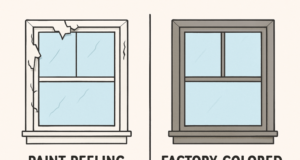WASHINGTON, D.C. – RealEstateRama – Homebuyer affordability improved in October, with the national median payment applied for by purchase applicants decreasing to $2,039 from $2,067 in September. This is according to the Mortgage Bankers Association’s (MBA) Purchase Applications Payment Index (PAPI), which measures how new monthly mortgage payments vary across time – relative to income – using data from MBA’s Weekly Applications Survey (WAS).
“Affordability conditions have now improved for the fifth consecutive month because of lower mortgage rates, higher household earnings, and flattening home-price growth,” said Edward Seiler, MBA’s Associate Vice President of Housing Economics and Executive Director of the Research Institute for Housing America. “The median purchase application payment amount in October was $88 lower than one year ago. Affordability is improving — PAPI is at its lowest level since March 2022— and is likely to continue to as mortgage rates hold to around 6 percent and more supply comes onto the market.”
An increase in MBA’s PAPI – indicative of declining borrower affordability conditions – means that the mortgage payment to income ratio (PIR) is higher due to increasing application loan amounts, rising mortgage rates, or a decrease in earnings. A decrease in the PAPI – indicative of improving borrower affordability conditions – occurs when loan application amounts decrease, mortgage rates decrease, or earnings increase.
The national PAPI (Figure 1) decreased 1.6 percent to 152.0 in October from 155.0 in September. While payments decreased 4.2 percent, earnings growth (based on pre-shutdown August data), means that the PAPI is down (affordability is higher) 5.5 percent on an annual basis. For borrowers applying for lower-payment mortgages (the 25th percentile), the national mortgage payment decreased to $1,402 in October from $1,418 in September.
Additional Key Findings of MBA’s Purchase Applications Payment Index (PAPI) – October 2025
- The national median mortgage payment was $2,039 in October 2025—down $28 from September. It was down by $88 from one year ago, equal to a 4.2% decrease.
- The national median mortgage payment for FHA loan applicants was $1,789 in October, down from $1,792 in September and down from $1,842 in October 2024.
- The national median mortgage payment for conventional loan applicants was $2,063, down from $2,105 in September and down from $2,134 in October 2024.
- The top five states with the highest PAPI were: Idaho (238.0), Nevada (230.7), Rhode Island (199.4), Arizona (198.6), and Tennessee (192.8).
- The top five states with the lowest PAPI were: Louisiana (113.5), Connecticut (116.2), D.C. (118.6), Hawaii (123.6), and North Dakota (124.9).
- Homebuyer affordability increased for Black households, with the national PAPI decreasing from 154.4 in September to 151.5 in October.
- Homebuyer affordability increased for Hispanic households, with the national PAPI decreasing from 144.3 in September to 141.6 in October.
- Homebuyer affordability increased for White households, with the national PAPI decreasing from 156.0 in September to 153.1 in October.
About MBA’s Purchase Applications Payment Index
The Mortgage Bankers Association’s Purchase Applications Payment Index (PAPI) measures how new mortgage payments vary across time relative to income. Higher index values indicate that the mortgage payment to income ratio (PIR) is higher than in a month where the index is lower. Contrary to other affordability indexes that make multiple assumptions about mortgage underwriting criteria to estimate mortgage payment level, PAPI directly uses MBA’s Weekly Applications Survey (WAS) data to calculate mortgage payments.
PAPI uses usual weekly earnings data from the U.S. Bureau of Labor Statistics’ Current Population Survey (CPS). Usual weekly earnings represent full-time wage and salary earnings before taxes and other deductions and include any overtime pay, commissions, or tips usually received. Note that data are not seasonally adjusted.
MBA’s Builders’ Purchase Application Payment Index (BPAPI) uses MBA’s Builder Application Survey (BAS) data to create an index that measures how new mortgage payments vary across time relative to income, with a focus exclusively on newly built single-family homes. As with PAPI, higher index values indicate that the mortgage payment to income ratio (PIR) is higher than in a month where the index is lower. To create BPAPI, principal and interest payment amounts are deflated by the same earnings series as in PAPI.
The rent data series calculated for MBA’s national mortgage payment to rent ratio (MPRR) comes from the U.S. Census Bureau’s Housing Vacancies and Homeownership (HVS) survey’s median asking rent. The HVS data is quarterly, and as such, the mortgage payment to rent ratio will be updated quarterly. The HVS data is quarterly, and as such, the mortgage payment to rent ratio will be updated quarterly. The MPRR data was not featured in the October 2025 data.
For additional information on MBA’s Purchase Applications Payment Index, click here.
Contact
Falen Pitts
(202) 557-2771











